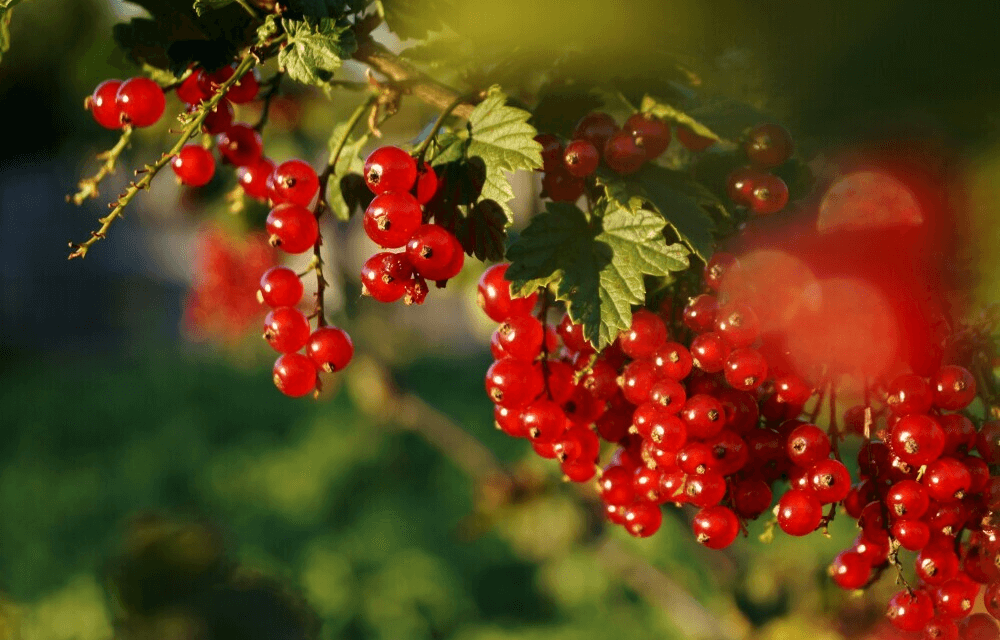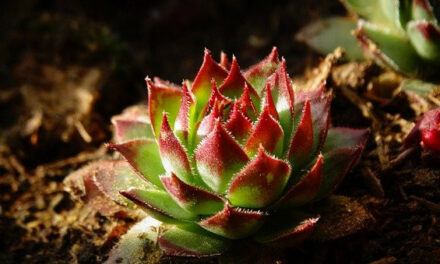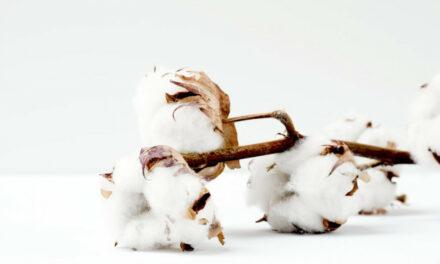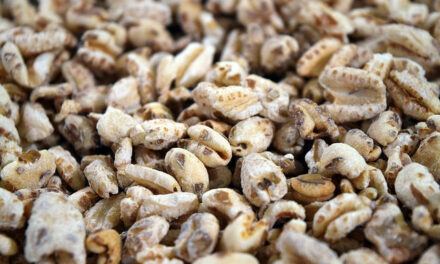Just as the saying goes “If an apple a day keeps the doctor away”, what could a red fruit do for someone with diabetes? it’s high time we explore the potential benefits of incorporating the best red fruit for diabetics into your diet. Let’s delve into the crimson corner of nature’s bounty and explore how these vibrant fruits can positively impact health, particularly for individuals managing diabetes. In this article, you’ll discover a world where taste meets health in perfect harmony, and color has more significance than just appealing aesthetics.
So, if you’re ready to add some sweetness back into your life without compromising your health, keep reading to discover the best red fruit for diabetics.
30 Red Color Fruits Diabetics Could Consider
Red fruits not only tantalize the taste buds with their sweet and tangy flavors but also offer a spectrum of health benefits. From the ruby-red allure of strawberries to the crimson richness of pomegranates, each red fruit brings its unique charm to the table. Here are some of the red colored fruits:
1. Strawberries
These vibrant red berries are juicy and sweet with a slightly tart flavor. They’re rich in vitamin C and antioxidants, perfect for snacking, desserts, or adding to salads.
2. Raspberries
Small and delicate, raspberries offer a sweet yet tangy flavor. They’re packed with fiber, vitamins, and minerals, making them an excellent addition to breakfast bowls or desserts.
3. Cherries
Whether sweet or tart, cherries boast a rich red hue and a sweet flavor. They’re a good source of antioxidants and can be enjoyed fresh, dried, or in various culinary creations.
4. Red Apples
Crisp and refreshing, red apples are a classic fruit loved for their sweet taste and crunchy texture. They’re rich in fiber and vitamin C, ideal for snacking or baking.
5. Cranberries
Tart and tangy, cranberries are commonly enjoyed in sauces, juices, or baked goods. They’re known for their potential health benefits, including urinary tract health and antioxidant properties.
6. Red Grapes
With their juicy flesh and sweet flavor, red grapes are a popular snack choice. They’re also used to make juice, wine, or dried as raisins, providing a dose of vitamins and antioxidants.
7. Pomegranates
These unique fruits are prized for their jewel-like seeds and sweet-tart flavor. Pomegranates are rich in antioxidants and have been linked to various health benefits, including heart health and anti-inflammatory effects.
8. Watermelon
Refreshing and hydrating, watermelon is synonymous with summertime. Its bright red flesh is juicy and sweet, making it a perfect snack or addition to fruit salads.
9. Red Plums
Sweet and succulent, red plums offer a burst of flavor with each bite. They’re high in vitamins and minerals, making them a nutritious choice for snacking or cooking.
10. Tomatoes
While technically a fruit, tomatoes are commonly used as a vegetable in culinary dishes. They come in various shades of red and are rich in vitamins, minerals, and antioxidants.
11. Rhubarb
Often used in pies and desserts, rhubarb has a tart flavor that pairs well with sweeter fruits. It’s high in fiber and vitamin K, contributing to digestive health and bone strength.
12. Red Currants
These tiny berries are bright red and tart in flavor. They’re often used in jams, jellies, or desserts, providing a burst of tanginess and color.
13. Blood Oranges
Distinctive for their deep red flesh, blood oranges offer a sweet yet tangy flavor with hints of raspberry. They’re rich in vitamin C and antioxidants, perfect for juicing or eating fresh.
14. Red Pears
Sweet and juicy, red pears have a crisp texture and a mild flavor. They’re high in fiber and vitamin C, making them a nutritious snack or addition to salads.
15. Dragonfruit
Also known as pitaya, dragonfruit is visually striking with its vibrant red skin and speckled flesh. It has a mildly sweet flavor and is rich in antioxidants and vitamins.
16. Goji Berries
These small red berries are revered for their potent antioxidant properties and sweet-tart flavor. Goji berries are often dried and enjoyed as a snack or added to smoothies and oatmeal.
17. Red Bananas
Unlike traditional yellow bananas, red bananas have a reddish-purple skin and a sweet flavor with hints of raspberry. They’re rich in potassium and vitamins, perfect for snacking or blending into smoothies.
18. Guava
With its tropical aroma and sweet flavor, red guava is a popular fruit in many cultures. It’s high in vitamin C and fiber, making it a nutritious addition to fruit salads or juices.
19. Red Papaya
Sweet and tropical, red papaya has vibrant red-orange flesh and a juicy texture. It’s rich in vitamins A and C, antioxidants, and digestive enzymes, perfect for enjoying fresh or in smoothies.
20. Red Passionfruit
Also known as granadilla, red passionfruit has a tart yet sweet flavor with aromatic seeds. It’s high in vitamins and antioxidants, ideal for adding a tropical twist to desserts or beverages.
21. Red Kiwifruit
Similar to green kiwifruit but with red flesh, red kiwifruit has a sweet and tangy flavor. It’s rich in vitamin C, fiber, and antioxidants, perfect for snacking or adding to fruit salads.
22. Cactus Pear
Also known as prickly pear, cactus pear has a vibrant red-purple skin and sweet, juicy flesh. It’s high in fiber, vitamins, and antioxidants, often enjoyed fresh or juiced.
23. Red Pluots
A cross between plums and apricots, red pluots offer a sweet and slightly tart flavor with juicy flesh. They’re high in vitamins and minerals, perfect for snacking or baking.
24. Red Pitahaya
Also known as red dragonfruit, red pitahaya has vibrant pink-red flesh with black seeds. It has a mildly sweet flavor and is rich in antioxidants and vitamins, ideal for enjoying fresh or blending into smoothies.
25. Red Lychee
Similar to traditional lychee but with red skin, red lychee has a delicate sweetness and floral aroma. It’s rich in vitamin C and antioxidants, perfect for enjoying fresh or adding to cocktails.
26. Red Nectarine
Sweet and juicy, red nectarines have smooth red skin and a firm texture. They’re high in vitamins and minerals, making them a nutritious snack or addition to desserts.
27. Red Goji Berries
Distinguished by their bright red color, red goji berries are sweeter than their traditional counterpart. They’re rich in antioxidants, vitamins, and minerals, perfect for snacking or adding to trail mixes.
28. Red Persimmon
Sweet and flavorful, red persimmons have a vibrant red-orange skin and a soft, creamy texture when ripe. They’re high in fiber, vitamins, and antioxidants, perfect for enjoying fresh or adding to salads.
29. Red Mulberries
These juicy red berries have a sweet and mildly tart flavor, similar to blackberries. They’re high in vitamins and antioxidants, perfect for snacking or adding to desserts.
30. Red Pineapple
With its red-orange flesh and sweet flavor, red pineapple offers a tropical twist on the classic fruit. It’s rich in vitamins and enzymes, perfect for enjoying fresh or adding to fruit salads.
Red Fruits Nutritional Comparison
Let’s peek into the nutritional value of these red treasures, exploring their individual attributes per 100 grams, and discover how they contribute to a palette of culinary pleasures and well-being.
| Fruit | Calories | Carbohydrates (g) | Fiber (g) | Sugars (g) | Protein (g) | Fat (g) | Vitamin C (mg) | Vitamin A (IU) | Antioxidants | Taste & Uses |
| Strawberries | 32 | 7.7 | 2 | 4.9 | 0.7 | 0.3 | 58.8 | 12 | High | Sweet-tart flavor, perfect for snacking or desserts. |
| Raspberries | 52 | 11.9 | 6.5 | 4.4 | 1.5 | 0.7 | 26.2 | 27 | High | Sweet yet tangy, great for breakfast or baking. |
| Cherries | 50 | 12.2 | 1.6 | 8.3 | 1.1 | 0.3 | 7 | 1450 | Moderate | Sweet and succulent, enjoyed fresh or in desserts. |
| Red Apples | 52 | 14 | 2.4 | 10 | 0.3 | 0.2 | 4.6 | 54 | Moderate | Classic sweet flavor, ideal for snacking or baking. |
| Cranberries | 46 | 12.2 | 4.6 | 4.4 | 0.4 | 0.1 | 13.3 | 0 | High | Tart and tangy, commonly used in sauces and baking. |
| Red Grapes | 69 | 18.1 | 0.9 | 15.5 | 0.7 | 0.2 | 2.3 | 66 | Moderate | Juicy and sweet, perfect for snacking or juicing. |
| Pomegranates | 83 | 18.7 | 4 | 13.7 | 1.7 | 1.2 | 10.2 | 0 | High | Sweet-tart flavor, rich in antioxidants and vitamins. |
| Watermelon | 30 | 7.6 | 0.4 | 6.2 | 0.6 | 0.2 | 8.1 | 569 | High | Refreshing and hydrating, perfect for summer days. |
| Red Plums | 46 | 11.4 | 1.4 | 9.9 | 0.7 | 0.3 | 9.5 | 345 | High | Juicy and succulent, ideal for jams and baking. |
| Tomatoes | 18 | 3.9 | 1.2 | 2.6 | 0.9 | 0.2 | 13.7 | 1016 | High | Versatile ingredient, used in various culinary dishes. |
| Rhubarb | 21 | 4.5 | 1.8 | 1.1 | 0.9 | 0.2 | 8.2 | 0 | Moderate | Tart flavor, used in pies and desserts. |
| Red Currants | 56 | 13.8 | 4 | 7.4 | 1.3 | 0.2 | 41 | 0 | High | Tangy flavor, used in jams and desserts. |
| Blood Oranges | 43 | 8.2 | 1.4 | 8.2 | 0.7 | 0.2 | 50 | 1350 | High | Sweet-tart flavor, rich in vitamin C. |
| Red Pears | 57 | 15 | 3 | 9.8 | 0.4 | 0.1 | 4 | 0 | Low | Crisp texture, mildly sweet flavor. |
| Dragonfruit | 60 | 9 | 1.9 | 8.5 | 1.1 | 0.6 | 9.2 | 60 | High | Mildly sweet flavor, visually striking. |
| Goji Berries | 349 | 69.3 | 13 | 44.3 | 14.3 | 0.4 | 48.4 | 2680 | High | Sweet-tart flavor, packed with antioxidants. |
| Red Bananas | 89 | 22.8 | 2.6 | 17.1 | 1.1 | 0.3 | 8.7 | 64 | Moderate | Sweet flavor with hints of raspberry. |
| Guava | 68 | 14.3 | 5 | 9 | 2 | 1 | 228 | 624 | High | Sweet and tropical, rich in vitamin C. |
| Red Papaya | 43 | 10.8 | 1.7 | 7.8 | 0.5 | 0.3 | 62 | 1030 | High | Juicy and tropical, rich in antioxidants. |
| Red Passionfruit | 97 | 23.4 | 10.4 | 11.2 | 2.2 | 0.7 | 30 | 1275 | High | Tart-sweet flavor, aromatic seeds. |
| Red Kiwifruit | 61 | 14.7 | 3 | 9.5 | 1.1 | 0.5 | 161 | 0 | High | Sweet-tangy flavor, rich in vitamin C. |
| Cactus Pear | 41 | 10.5 | 3.6 | 9.6 | 0.7 | 0.5 | 3.1 | 39 | High | Sweet and refreshing, high in fiber. |
| Red Pluots | 45 | 11.4 | 1.4 | 9.9 | 0.7 | 0.3 | 9.5 | 345 | High | Sweet-tart flavor, luscious texture. |
| Red Pitahaya | 50 | 9 | 1 | 8 | 1 | 0.4 | 9 | 0 | High | Mildly sweet flavor, visually striking. |
| Red Lychee | 66 | 16.5 | 1.3 | 15.2 | 0.8 | 0.4 | 71 | 0 | Low | Delicate sweetness, floral aroma. |
| Red Nectarine | 44 | 11.1 | 1.7 | 8.5 | 0.9 | 0.3 | 5.4 | 334 | Moderate | Juicy and sweet, perfect for snacking. |
| Red Goji Berries | 349 | 69.3 | 13 | 44.3 | 14.3 | 0.4 | 48.4 | 2680 | High | Sweet-tart flavor, packed with antioxidants. |
| Red Persimmon | 70 | 18 | 3.6 | 12 | 0.6 | 0.4 | 2 | 81 | Low | Sweet and flavorful, creamy texture. |
| Red Mulberries | 43 | 9.8 | 1.7 | 8.1 | 1.4 | 0.4 | 10 | 2 | High | Sweet-tart flavor, juicy texture. |
| Red Pineapple | 50 | 13.1 | 1 | 9.9 | 0.5 | 0.1 | 47 | 0 | High | Tropical sweetness, rich in enzymes. |
Portion Control and Glycemic Impact
Portion control and understanding the glycemic impact are essential for individuals with diabetes when including red fruits in their diet. While red fruits offer valuable nutrients and antioxidants, their natural sugar content can affect blood sugar levels. Therefore, managing portion sizes is crucial to prevent spikes in glucose levels.
Why Should People With Diabetes Consider Red Fruits?
Well, red fruits are a nutritional powerhouse for people with diabetes. These fruits are packed with antioxidants, specifically anthocyanins and ellagic acid, which have been shown to improve blood sugar levels and insulin sensitivity. Additionally, the high fiber content in red fruits can help regulate blood sugar levels by slowing down the absorption of glucose. This makes them a great choice for people with diabetes looking to manage their condition through diet.
Moreover, red fruits are low in calories and high in essential nutrients like vitamin C, potassium, and folate. This combination makes them an ideal snack for people with diabetes looking to maintain a healthy weight while controlling their blood sugar. Including a variety of red fruits in their diet can also provide diabetics with an array of phytonutrients that support overall health and reduce inflammation associated with diabetes complications.
Importance Of Balancing Variety In The Diet
Balancing variety in the diet is paramount for individuals managing diabetes. Incorporating a diverse range of foods ensures a steady intake of essential nutrients while helping to regulate blood sugar levels. By including a variety of fruits, vegetables, whole grains, lean proteins, and healthy fats, individuals with diabetes can maintain stable energy levels throughout the day and better manage their condition.
Do You Need To Be Cautious While Eating Red Fruits?
Let’s talk about red fruits and whether you need to be cautious when indulging in them. Red fruits like strawberries, raspberries, and cherries can be a delicious addition to your diet as they are packed with essential nutrients and antioxidants. However, it’s important to consume them in moderation, especially if you’re watching your blood sugar levels.
The natural sugars present in red fruits can cause a spike in your blood sugar if consumed in exceptionally large quantities. But fret not! You can still enjoy these treats by being mindful of portion sizes and pairing them with protein or fiber-rich foods to help slow down the absorption of sugar into your bloodstream. Remember, balance is key. So go ahead and savor those juicy red berries, just keep an eye on how much you’re enjoying!
The Best Red Fruit For Diabetics
Among the spectrum of red-hued delights, one fruit stands out as a superstar for diabetics – the humble yet mighty red apple.
Red apples are not only delicious but also pack a nutritional punch that aligns perfectly with diabetes management goals. Rich in fiber and low in calories, red apples offer a satisfying crunch along with a sweet flavor that makes them a favorite snack for many.
One of the key benefits of red apples for diabetics lies in their low glycemic index (GI). This means that the natural sugars in red apples are digested and absorbed slowly, leading to a gradual rise in blood sugar levels rather than a sudden spike. As a result, red apples can help prevent fluctuations in blood sugar levels and provide sustained energy throughout the day.
But the benefits of red apples don’t stop there. Red apples are also packed with essential vitamins and minerals, including vitamin C, potassium, and antioxidants. Vitamin C supports immune function and may help reduce the risk of complications associated with diabetes, while potassium plays a role in regulating blood pressure and heart health.
Antioxidants found in red apples, such as quercetin and catechin, have been linked to lower inflammation levels and improved insulin sensitivity, further supporting diabetes management efforts.
Final Thoughts
Red fruits offer a delicious and nutritious option for people with diabetes or diet-conscious individuals. With their low glycemic index, high fiber content, and array of vitamins and antioxidants, red fruits like apples, strawberries, and cherries can help regulate blood sugar levels and support overall health. Be sure to consume them in reasonable amounts as part of a well-rounded diet.











